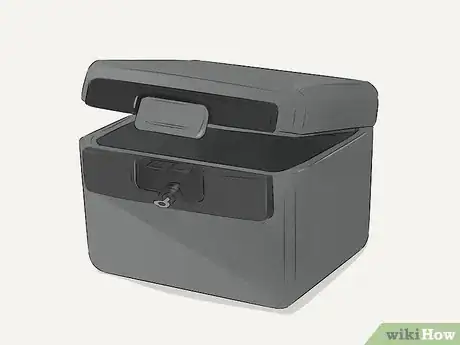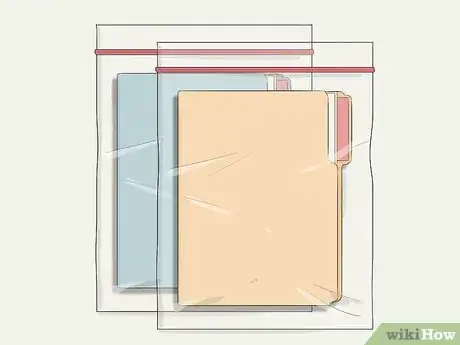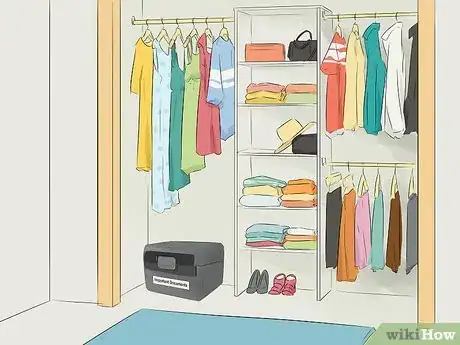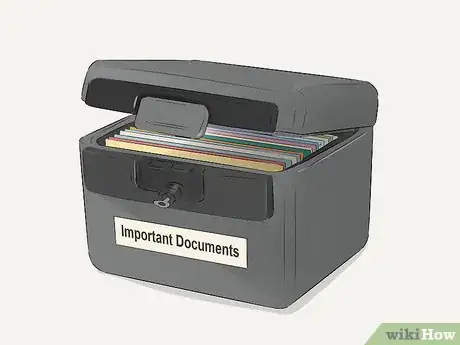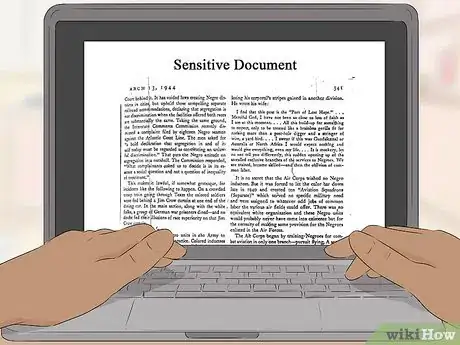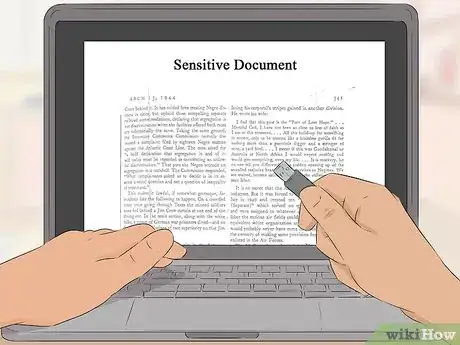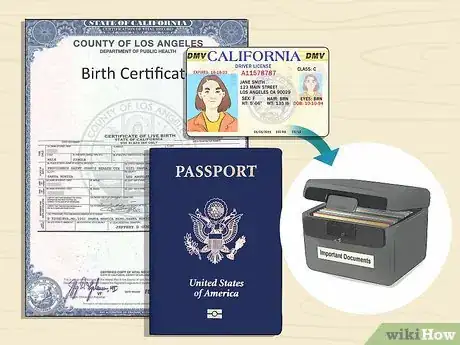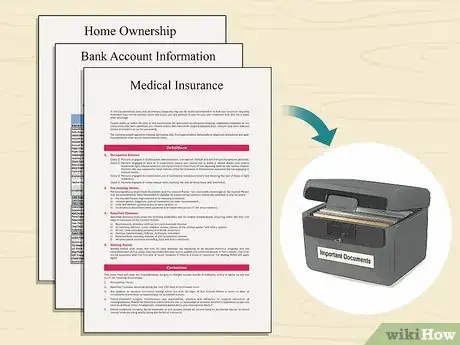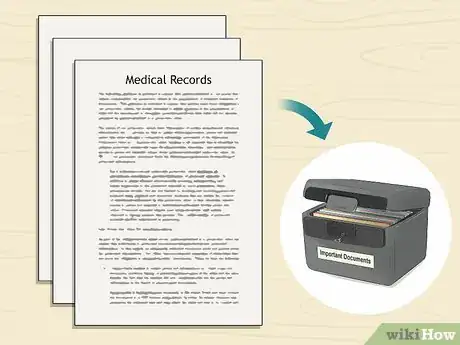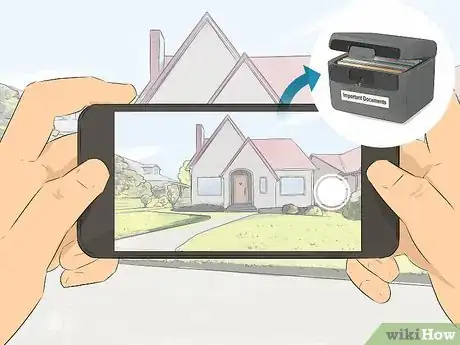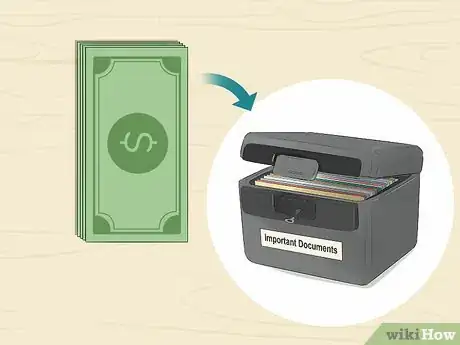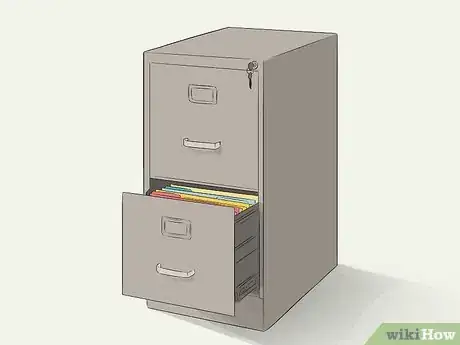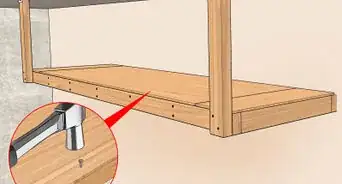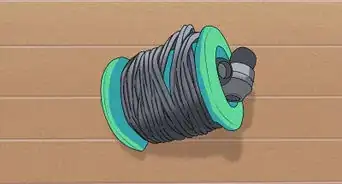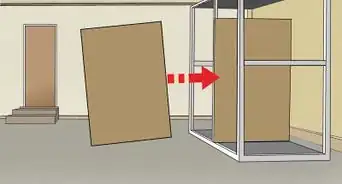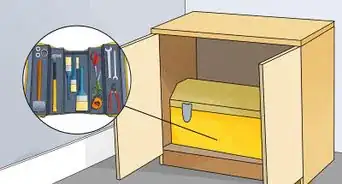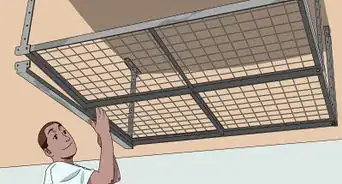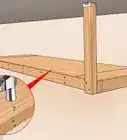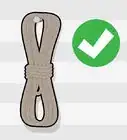This article was co-authored by Kerri Christensen. Kerri Christensen is a Cleaning & Organization Specialist and the Owner of Busted Knuckles Cleaning. With more than seven years of cleaning experience, she specializes in helping others make their homes a cleaner place. Kerri holds a Bachelor’s in Human Resources Management and Services from Western International University.
There are 8 references cited in this article, which can be found at the bottom of the page.
This article has been viewed 37,117 times.
Everyone has important documents, from a birth certificate to banking information, that they want to keep safe and secure. While we never want to think about bad things happening, these documents are all crucial if there's any kind of emergency or disaster. Luckily, storing and protecting them is easy. With some planning, organization, digitizing, and storage tools, you can keep all your important documents in a safe place.
Steps
Protecting Your Documents
-
1Get a portable, fireproof lockbox for vital documents. The best way to protect your important documents is with a home lockbox. This is what FEMA recommends for storage. Get a fireproof, lockable box so your documents will be safe in an emergency. Also make sure the box is easy to carry so you can take your documents with you if you have to leave.[1]
- Hardware or office supply stores usually carry document carrying cases. You can also find them online.
- Lockboxes might come with a key or combination lock. Whichever you choose, make sure you keep the key or combination in a safe place that you can reach. Tell your family where to find these as well.[2]
- Some people think putting their documents in a safe is the best plan, but you won’t be able to carry a big or heavy safe. This means you could lose your documents if you have to leave your home. A portable lockbox is a much better choice.
-
2Put all the documents in plastic bags before locking the box. While lockboxes are usually waterproof, leaks can happen, especially if there’s a flood. Since water can ruin important documents, it’s best to add a second layer of protection. Put all the documents in sealable plastic bags before placing them inside the box.[3]
- You may also want to leave the box in a high place, like up on a shelf or on a second-floor, as an extra precaution against flood damage.
Advertisement -
3Leave the lockbox in an accessible place that you can reach quickly. You might never want to think about leaving your home in a hurry. However, if there is any type of emergency like a natural disaster, you can’t waste time looking for your documents. Leave your lockbox in a place you can reach easily so you can grab it quickly. This will save you precious time in an emergency.[4]
- You should hide the box a little, just in case a thief enters your home. Putting it in the back of your closet should be enough, as long as you know where it is and can get it in a hurry.
- Tell other members of your household where the box is as well, in case they have to leave quickly when you aren’t there.
-
4Label the box so it’s easy to identify. If you’re in a hurry or someone else needs to grab the box, make sure it’s easy to identify. Put a label on it saying something like “Important Documents.” This way, you can find and grab the box quickly in an emergency.[5]
-
5Back up all of your important documents with digital copies. It’s always possible for physical documents to get damaged or lost, so a digital backup is very important. Use a scanner and digitize all the documents that you’re storing in the lockbox. This way, you’ll have backups if any of those get damaged or lost.[6]
- There are also smartphone apps that let you take photos and store them as PDFs. This is a quick and easy way to backup your documents.
- Digitizing less important documents can be a great way to cut down on clutter in your home as well. If you’re feeling overwhelmed with too much paperwork, this can help you get organized.
-
6Store your digital copies in at least 2 secure locations. A digital backup is a good start, but you also need to make sure you protect these. In general, keep your digital files in at least 2 locations so you’re less likely to lose them. You could load the files onto a removable flash drive and leave that drive in your lockbox, and also upload the files to a secure cloud storage account. This way, you have multiple ways to access your documents in an emergency.[7]
- Make sure you password-protect any folders that you store important documents in. Set your cloud files to private, and put a password on the folders on your computer or flash drive.[8]
- You could also store the flash drive or hard drive in another lockbox at your bank. This way, you have digital copies in 2 physical locations.
Storing the Right Documents
-
1Put all your personal identification documents in the portable lockbox. In the event of a disaster, you’ll need to be able to prove your identity and family relationships. Store originals of anything that you’ll need to identify yourself and your family in the lockbox.[9]
- Self-identification documents include your passport, birth certificate, social security card, and green card or immigration records. You should also leave a copy of your driver’s license or state-issued ID.
- If you served in the military at any point, then include your service ID and records as well.
- For your family relationships, include your marriage or divorce records, children’s birth certificates, adoption or child custody papers, and pet ownership records or tags.
-
2Store your financial records to prove what you own. Financial and ownership records are important for reimbursement and insurance after any kind of disaster, so always include these in your lockbox as well.[10] Put paper records of everything you own and all your assets so you can recover them if there’s an accident and you have to leave.[11]
- Important ownership records include the deed to your home, property value assessment, title to your car and other registration documents, your will, and bank and retirement account information. Also include copies of any insurance plans you have.
- Generally, records for recent or ongoing financial obligations should be in the box as well. Examples include your mortgage documents, loan information, alimony, child support, automatic payment records for cable, gyms, utilities, or subscriptions, and most recent tax returns.
- If you rent your home instead of owning it, include your lease or rental agreement.
-
3Include your medical records so you don’t lose them. You’ll also need your health and medical records in the event of an emergency. Make sure you have immunization and vaccine records, lists of medications you take, a list of your allergies or health conditions, your health insurance information, medical power of attorney forms, and contact information for your doctors and dentist so you can reach them if you have to.[12]
- Remember to include all of this information for other members of your household or family as well.
- If you have any disabilities, make sure to add records that prove this as well as any paperwork for your benefits or compensation.
- If you have a pet, include veterinary records too.
-
4Take photos of any valuable items or property for insurance coverage. Not everything you own can fit in your lockbox, so keeping photos of valuable items can help if anything is damaged and you need to submit insurance claims. Take photos of anything valuable that could get damaged in an accident. Store physical copies of the pictures in the box, and also upload digital copies to a flash drive or cloud storage file.[13]
- Some items you might need coverage for include your home, car, artwork, collectible items, or expensive electronics.
-
5Leave some cash in the lockbox just in case. If there is an electrical outage or you have to leave your home, then you might not be able to access your bank account. Leave an emergency cash fund of small bills, no higher than $20 bills, just in case you need money during an emergency.[14]
- While having emergency cash is important, don’t leave all your savings in there. Money in a bank account is insured by the FDIC and money in your lockbox isn’t. It’s better to leave most of your savings in the bank and only store what you might need in cash.[15]
-
6Use a lockable file cabinet for less vital paperwork. Any household has plenty of other paperwork that isn’t critical and doesn’t need to be in your lockbox. The best way to store these documents is with a metal, lockable file cabinet. This keeps them protected and organized, and you don’t have to worry about trying to carry them with you if you need to leave your home.[16]
- Some important but non-critical paperwork includes recent bank statements, tax returns more than a year old, school or work papers, utility bills, credit card statements, and important receipts.
- Generally, if bills or statements are over a year old, you can shred them. You could also digitize them if you want to keep records without any clutter.
- Organize your files in alphabetical order so they’re easier to find.
Warnings
- Don’t put your life or safety in danger to save your documents.⧼thumbs_response⧽
- If there’s ever an emergency and you have to leave your home right away, prioritize everyone’s safety first. Your documents can wait until everyone else is out.⧼thumbs_response⧽
References
- ↑ https://www.ready.gov/sites/default/files/2020-03/fema_safeguard-critical-documents-and-valuables_0.pdf
- ↑ https://myucretirement.com/Resource/256
- ↑ https://www.aarp.org/money/investing/info-08-2012/protect-important-documents-and-valuables.html
- ↑ https://www.aarp.org/money/investing/info-08-2012/protect-important-documents-and-valuables.html
- ↑ https://www.washingtonpost.com/lifestyle/home/drowning-in-paperwork-heres-how-to-deal/2019/02/11/81daa9c4-295d-11e9-b2fc-721718903bfc_story.html
- ↑ https://www.forbes.com/sites/quora/2017/10/31/how-to-protect-your-important-documents-during-a-natural-disaster/
- ↑ https://www.ready.gov/sites/default/files/2020-03/fema_safeguard-critical-documents-and-valuables_0.pdf
- ↑ https://www.forbes.com/sites/quora/2017/10/31/how-to-protect-your-important-documents-during-a-natural-disaster/
- ↑ https://www.ready.gov/sites/default/files/2020-03/fema_safeguard-critical-documents-and-valuables_0.pdf
- ↑ https://www.aarp.org/money/investing/info-08-2012/protect-important-documents-and-valuables.html
- ↑ https://www.ready.gov/sites/default/files/2020-03/fema_safeguard-critical-documents-and-valuables_0.pdf
- ↑ https://www.ready.gov/sites/default/files/2020-03/fema_safeguard-critical-documents-and-valuables_0.pdf
- ↑ https://www.ready.gov/sites/default/files/2020-03/fema_safeguard-critical-documents-and-valuables_0.pdf
- ↑ https://www.fdic.gov/news/events/affordable/hcachecklist.pdf
- ↑ https://www.investopedia.com/safe-deposit-box-what-to-store-and-not-store-in-yours-4589854
- ↑ https://www.washingtonpost.com/lifestyle/home/drowning-in-paperwork-heres-how-to-deal/2019/02/11/81daa9c4-295d-11e9-b2fc-721718903bfc_story.html
- ↑ https://www.ready.gov/kit
